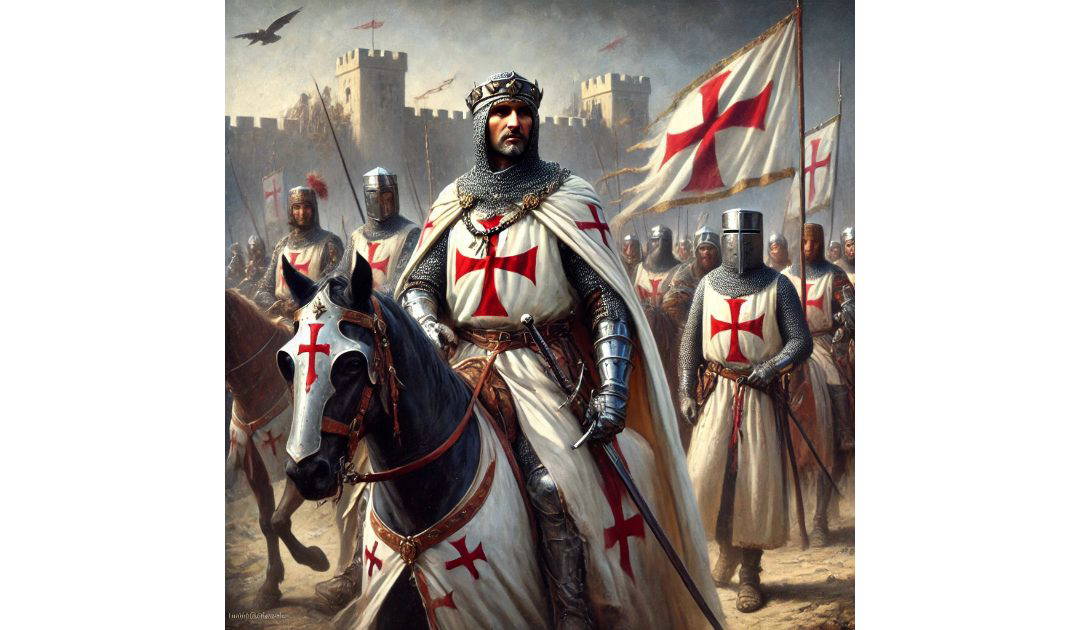On the 18th of March, 1314, Jacques de Molay, the 23rd and final Grand Master of the Knights Templar, was burnt at the stake. Jacques de Molay is one of the most enigmatic and tragic figures of the medieval period. As the last Grand Master of the Knights Templar, he led the order during its final years, ultimately facing betrayal, imprisonment, and execution. His death in 1314 marked the end of the Templars, but his legacy continues to fuel fascination, mystery, and conspiracy theories to this day.
Born around 1243 in the region of Franche-Comté, France, Jacques de Molay joined the Knights Templar as a young man, probably in the 1260s. The Templars were a powerful military and religious order founded in the early 12th century to protect Christian pilgrims traveling to the Holy Land. Over time, despite their strict code of chivalry, they became one of the wealthiest and most influential organisations in medieval Europe, operating as warriors, bankers, and landowners.
By 1292, de Molay had risen to the highest rank in the order, becoming Grand Master. He took on the immense responsibility of leading the Templars at a time when their power was beginning to wane, following the loss of the Crusader states in the Middle East. His tenure was marked by efforts to regain influence, negotiate with European rulers, and plan for new military campaigns.
By the early 14th century, the Templars had amassed significant wealth and influence, leading to both admiration and resentment. King Philip IV of France, deeply in debt to the order, saw an opportunity to eliminate his financial obligations and seize their assets. In 1307, he launched a ruthless campaign against the Templars, arresting de Molay and many of his knights on charges of heresy, blasphemy, and other fabricated crimes.
On the 13th of October, 1307, now infamous as a possible origin of the superstition surrounding Friday the 13th—Templars across France were arrested in a coordinated operation. Under torture, many confessed to false accusations, giving Philip the justification he needed to pressure Pope Clement V into suppressing the order.
De Molay and his fellow Templars endured years of imprisonment, interrogation, and trials. Although he initially confessed under duress, he later recanted, maintaining that the Templars were innocent. His retraction angered Philip IV, who sought to make an example of him.
In 1312, Pope Clement V officially disbanded the Knights Templar under extreme pressure from the French crown. The order’s assets were largely transferred to the Knights Hospitaller, though Philip managed to claim much of the Templar wealth in France for himself.
On the 18th of March, 1314, Jacques de Molay and another high-ranking Templar, Geoffroi de Charney, were sentenced to death as relapsed heretics. They were burned at the stake on a small island in the Seine River in Paris.
According to legend, as the flames consumed him, de Molay cursed both King Philip IV and Pope Clement V, summoning them to divine judgment within the year. Remarkably, both men died shortly afterwards. Clement died in April and Philip in November, 1314. This eerie coincidence fueled myths about the Templars’ supposed supernatural influence and has been the subject of speculation for centuries.
The dramatic downfall of Jacques de Molay and the Knights Templar left a lasting impact on history. The order’s sudden destruction, combined with the mysterious nature of their trial and execution, led to countless legends. Some believe the Templars went underground, forming secret societies like the Freemasons. Others speculate that they safeguarded lost treasures, such as the Holy Grail or the Ark of the Covenant.
While there is no historical evidence to support these claims, the story of de Molay remains a powerful symbol of loyalty, resilience, and injustice. His death marked the end of the Templars as a recognised institution, but their legend continues to captivate historians, writers, and conspiracy theorists alike.

